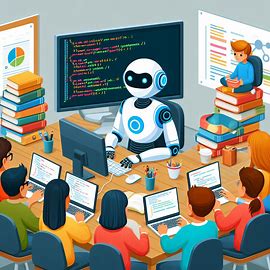
In today’s rapidly evolving digital landscape, programming skills have become increasingly essential across various industries. Whether you’re aiming to build a career as a software developer, enhance your analytical abilities, or simply explore the world of coding, programming tutorials offer a gateway to acquiring and honing these valuable skills. In this comprehensive guide, we’ll delve into the realm of programming tutorials, exploring their significance, different formats, best practices, and tips for maximizing your learning experience.
Understanding Programming Tutorials
Defining Programming Tutorials
Programming tutorials serve as educational resources designed to teach individuals how to write code, develop software applications, and solve problems using programming languages. These tutorials come in various formats, ranging from written articles and video lectures to interactive coding exercises and comprehensive online courses.
Types of Programming Tutorials
1. Written Tutorials: Written tutorials typically consist of step-by-step instructions, explanations, and code examples presented in a textual format. They often include screenshots, diagrams, and code snippets to aid comprehension.
2. Video Tutorials: Video tutorials feature instructors demonstrating programming concepts, coding techniques, and problem-solving strategies in real-time. They offer visual and auditory learning experiences, making complex topics more accessible.
3. Interactive Tutorials: Interactive tutorials allow learners to practice coding exercises directly within the tutorial environment. They provide immediate feedback, hints, and solutions, fostering hands-on learning and skill reinforcement.
4. Online Courses: Online courses combine lectures, assignments, quizzes, and projects to deliver comprehensive programming education. They are structured into modules or chapters, covering specific topics in depth and often include a mix of written content, videos, and interactive exercises.
Benefits of Programming Tutorials
1. Accessibility
Programming tutorials are accessible to anyone with an internet connection, regardless of their geographical location or background. They enable self-paced learning and cater to diverse learning styles and preferences.
2. Flexibility
Programming tutorials offer flexibility in terms of when and where you can learn. Whether you prefer to study early in the morning, late at night, or during your lunch break, tutorials are available 24/7 to accommodate your schedule.
3. Hands-On Learning
Many programming tutorials provide opportunities for hands-on learning through coding exercises, projects, and challenges. Hands-on practice is essential for reinforcing concepts, building practical skills, and gaining confidence in programming.
4. Community Support
Online programming communities, forums, and discussion boards provide additional support and resources for learners. You can ask questions, seek help with coding problems, and connect with fellow learners and experts, fostering a sense of community and collaboration.
Best Practices for Programming Tutorials
1. Choose the Right Tutorial
Select a tutorial that aligns with your skill level, learning objectives, and preferred learning style. Consider factors such as the programming language covered, the depth of coverage, and the quality of instruction.
2. Set Clear Goals
Define specific learning goals before starting a tutorial. Whether you want to learn a new programming language, build a web application, or solve a particular problem, having clear objectives will guide your learning journey and help you stay focused and motivated.
3. Practice Regularly
Consistent practice is key to mastering programming skills. Set aside dedicated time each day or week to work on coding exercises, projects, or challenges presented in the tutorial. Repetition and practice are essential for solidifying your understanding and building proficiency in programming.
4. Seek Feedback
Seek feedback from peers, mentors, or instructors to identify areas for improvement and address any misconceptions or misunderstandings. Actively participate in online forums and communities to engage with others, share your experiences, and learn from their insights and perspectives.
Tips for Maximizing Your Learning Experience
1. Take Notes
Take notes while following along with the tutorial to summarize key concepts, code snippets, and techniques. Writing notes helps reinforce learning, serves as a reference for future study, and aids in retention and recall of information.
2. Experiment and Explore
Don’t be afraid to experiment with code and explore alternative solutions to problems. Programming is a creative endeavor, and there are often multiple ways to achieve the same outcome. Embrace curiosity, curiosity, and experimentation as you navigate through the tutorial.
3. Break It Down
Break down complex concepts or problems into smaller, more manageable parts. Focus on understanding each component individually before tackling the larger task as a whole. Divide significant projects into smaller milestones and acknowledge your achievements as you progress.
4. Stay Persistent
Programming can be challenging, especially when you encounter errors or bugs in your code. Stay persistent, remain patient, and don’t be discouraged by setbacks. Learning to debug and troubleshoot code is an essential skill for every programmer, and perseverance is key to overcoming obstacles and achieving success.
Conclusion
Programming tutorials are invaluable resources for individuals looking to learn programming languages, develop coding skills, and advance their careers in technology. Whether you’re a novice just starting your programming journey or an experienced coder seeking to expand your knowledge, there are tutorials available to suit every learning style and preference. By following best practices, setting clear goals, and maximizing your learning experience, you can unlock the full potential of programming tutorials and become a proficient programmer. Remember, the journey to mastery may be challenging at times, but with dedication, persistence, and a willingness to learn, you can achieve your programming goals and embark on a rewarding career in the world of technology.
Leave a Reply